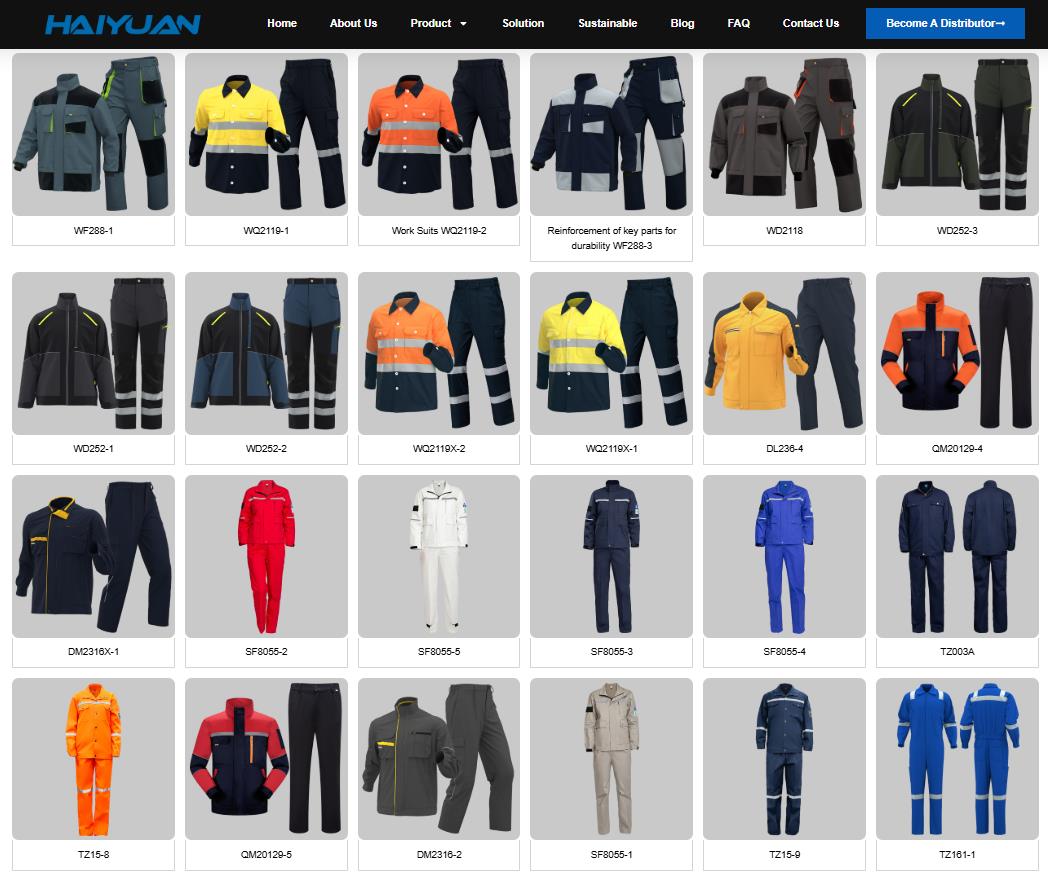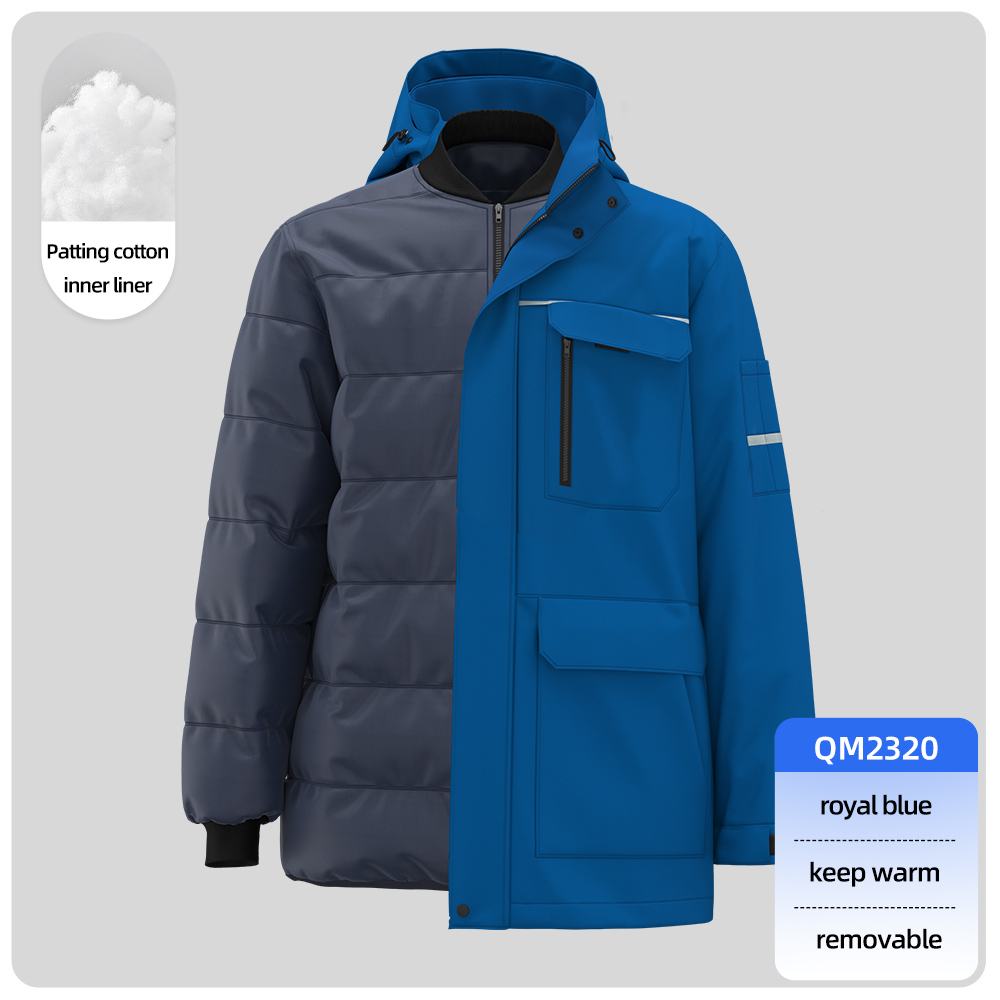Protective clothing for construction workers is essential for safety against a wide range of hazards on a job site. It’s a head-to-toe system designed to protect against physical, environmental, and impact-related risks.
Here is a breakdown of the typical protective clothing and Personal Protective Equipment (PPE) a construction worker will wear, from head to toe.
The Head
-
Hard Hat (Helmet): Non-negotiable on most sites.
-
Purpose: Protects from falling objects, bumps against fixed structures, and, in some cases, electrical shock (Class E or G helmets).
-
Key Features: A sturdy outer shell and an inner suspension system that absorbs impact.
-
The Upper Body
-
High-Visibility (Hi-Vis) Vest or Shirt: Often the most visible piece of PPE.
-
Purpose: Makes workers visible to equipment operators, drivers, and other workers. Crucial in low-light conditions or near traffic.
-
Standards: Must meet specific standards like ANSI/ISEA 107 in the US, which defines color (fluorescent yellow-orange or red) and amount of reflective tape.
-
-
Long-Sleeved Shirts: Made from durable materials like cotton or duck cloth.
-
Purpose: Protects skin from UV exposure, abrasions, cuts, and welding spatter.
-
-
Flame-Resistant (FR) Clothing:
-
Purpose: Essential for workers exposed to flash fires or electrical arc flashes (e.g., welders, electricians).
-
The Hands
-
Work Gloves: The type of glove varies drastically by task.
-
Purpose:
-
Leather/Cut-Resistant Gloves: General construction, handling materials, protection from cuts and abrasions.
-
Impact-Resistant Gloves: Protect knuckles and hands from crushing injuries.
-
Rubber/Insulated Gloves: For electrical work or working with wet concrete.
-
Welding Gloves: Heavy-duty leather gloves to protect from extreme heat and sparks.
-
-
The Lower Body
-
Durable Work Pants: Made from materials like canvas or denim.
-
Purpose: Resist wear, tear, and abrasion. Many have reinforced knees.
-
-
Pants with Knee Pad Pockets: Many workers wear pants designed to hold removable knee pads.
-
FR Pants: Worn by welders and electricians as part of a full FR outfit.
The Feet
-
Safety-Toe Boots (Work Boots): Arguably as important as a hard hat.
-
Purpose:
-
Steel/Composite Toe: Protects feet from crushing by heavy falling or rolling objects.
-
Puncture-Resistant Sole: Prevents sharp objects (nails, rebar) from penetrating the foot.
-
Slip-Resistant & Oil-Resistant Sole: Provides traction on slippery surfaces.
-
Electrical Hazard (EH) Rated: Provides a secondary layer of protection against electrical shock.
-
-
Specialized & Situational Protective Clothing
Depending on the specific task, a construction worker may need additional gear:
-
Fall Protection System: For anyone working at height (e.g., on scaffolding, roofs).
-
Includes: A full-body harness, lanyard, and secure anchor point.
-
-
Respiratory Protection: For tasks creating dust, fumes, or mists (e.g., concrete cutting, sanding, painting).
-
Includes: Disposable masks (N95), half-face respirators, or powered air-purifying respirators (PAPRs).
-
-
Hearing Protection: In high-noise areas (e.g., jackhammering, demolition).
-
Includes: Disposable foam earplugs or reusable earmuffs.
-
-
Eye and Face Protection:
-
Safety Glasses: For general impact protection (flying dust, fragments).
-
Goggles: Provide a secure seal around the eyes for chemical splashes or fine dust.
-
Face Shields: Used in conjunction with safety glasses for tasks like grinding or chipping, which produce a high volume of fragments.
-
-
Full-Body Coveralls:
-
Purpose: Keep contaminants (like insulation fibers, lead dust, or concrete residue) off the worker’s clothing and skin. Often made of disposable Tyvek.
-
Summary Table of Essential Construction PPE
| Body Part | Protective Clothing | Primary Hazard Mitigated |
|---|---|---|
| Head | Hard Hat | Falling objects, head impacts |
| Eyes/Face | Safety Glasses, Goggles, Face Shield | Flying debris, chemical splashes, dust |
| Hearing | Earplugs, Earmuffs | Loud, damaging noise levels |
| Upper Body | Hi-Vis Vest/Shirt, FR Shirt | Being struck by vehicles/equipment, flash fire |
| Hands | Work Gloves (leather, cut-resistant, etc.) | Cuts, abrasions, chemicals, heat |
| Lower Body | Durable Pants, FR Pants | Abrasions, cuts, flash fire |
| Feet | Safety-Toe Boots | Crushing, punctures, slips, electrical shock |
| Full Body (At Height) | Fall Protection Harness | Falling from elevation |
In essence, a construction worker’s protective clothing is a system of integrated defenses. The exact combination worn on any given day is determined by a site-specific hazard assessment to ensure they are protected against the unique risks of their tasks.
For some insightful reads, we’ve curated a list of recommended articles just for you:
- How do I find a product manufacturer in China?
- How to find cheap manufacturers in China? A guide to avoid pitfalls
- How to complete your first purchase of workwear in China safely and efficiently
- Custom uniforms for Small business
- Choosing the Best Industrial Work Suit
- Ultimate Guide: Best Wholesale Work Clothes in China
- Cut & Sew Customization
- Logo Customize Clonthing Manufacturer
- The Ultimate Guide to Finding Reliable Wholesale Work Clothes Factories in China
- Importing Clothes from China Guide
Can’t find what you’re looking for? Feel free to contact us. We’re here to help 24/7.





